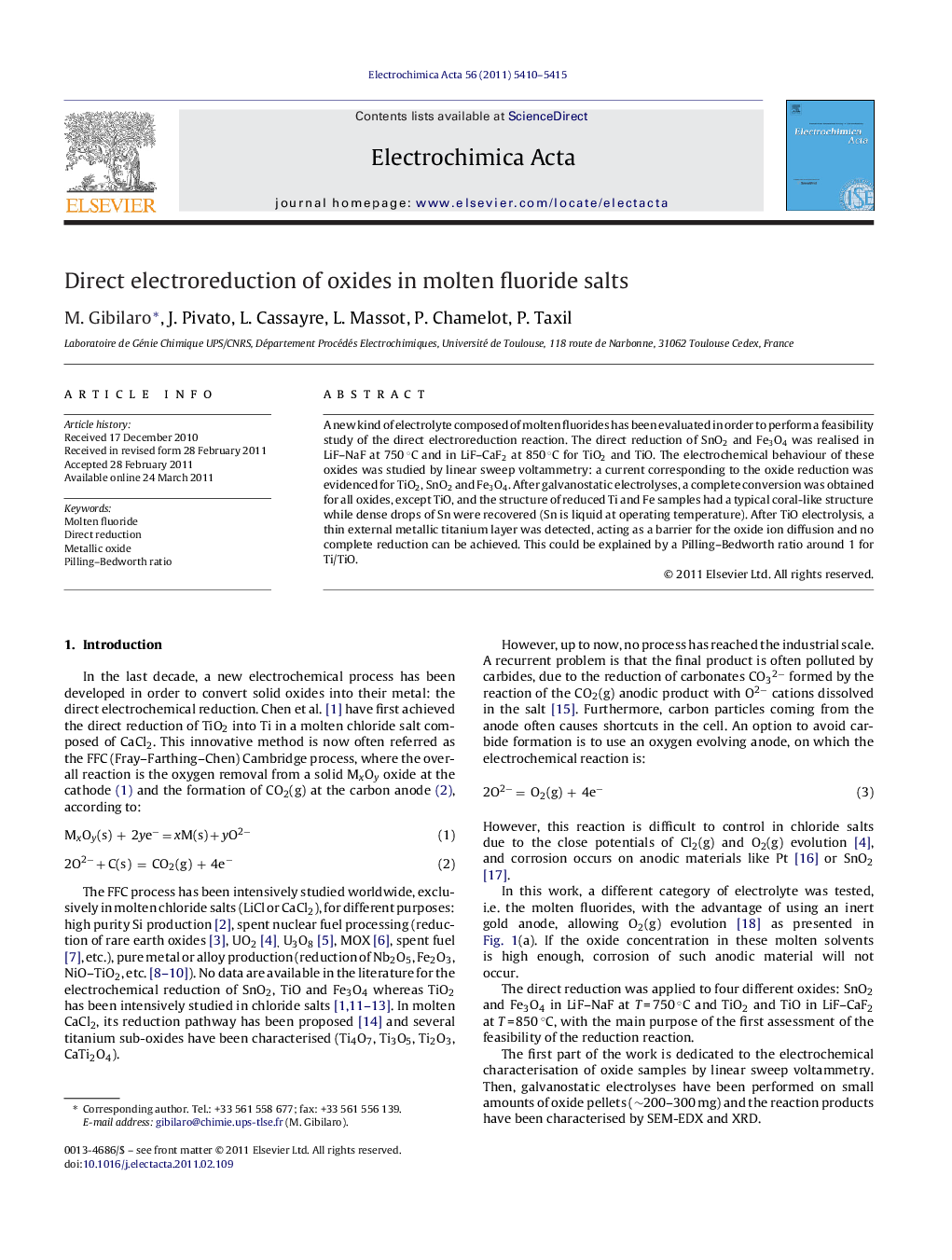| Article ID | Journal | Published Year | Pages | File Type |
|---|---|---|---|---|
| 189798 | Electrochimica Acta | 2011 | 6 Pages |
A new kind of electrolyte composed of molten fluorides has been evaluated in order to perform a feasibility study of the direct electroreduction reaction. The direct reduction of SnO2 and Fe3O4 was realised in LiF–NaF at 750 °C and in LiF–CaF2 at 850 °C for TiO2 and TiO. The electrochemical behaviour of these oxides was studied by linear sweep voltammetry: a current corresponding to the oxide reduction was evidenced for TiO2, SnO2 and Fe3O4. After galvanostatic electrolyses, a complete conversion was obtained for all oxides, except TiO, and the structure of reduced Ti and Fe samples had a typical coral-like structure while dense drops of Sn were recovered (Sn is liquid at operating temperature). After TiO electrolysis, a thin external metallic titanium layer was detected, acting as a barrier for the oxide ion diffusion and no complete reduction can be achieved. This could be explained by a Pilling–Bedworth ratio around 1 for Ti/TiO.
► A new electrolyte support was tested for the direct electrochemical reduction: the fluoride salts. ► A gold anode was used for oxygen evolution, instead of the classical carbon electrode, avoiding the carbide deposition and carbon dust pollution. ► The electrochemical signals of Fe2O3, TiO2 and SnO2 reduction were obtained by linear sweep voltammetry. ► The complete conversion of the metal oxides (Fe2O3, TiO2 and SnO2) into metals has been realized in a galvanostatic mode.
